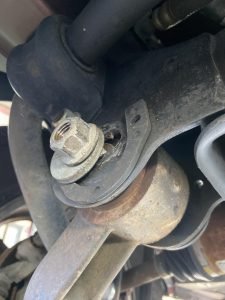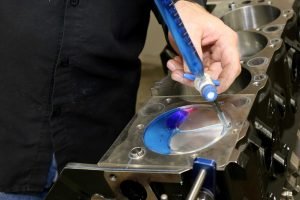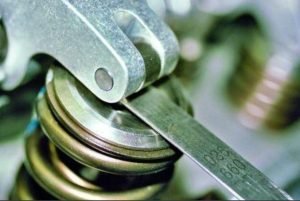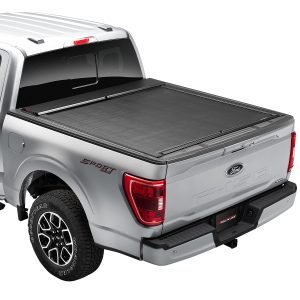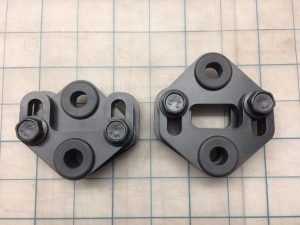In the world of automotive cooling systems, the radiator plays a crucial role in maintaining engine temperature and preventing overheating. When it comes to choosing a radiator, one of the decisions you may face is whether to opt for a 2-row or a 3-row aluminum radiator. In this article, we will explore the differences between these two options, their features, and help you make an informed decision when it comes to selecting the right cooling solution for your vehicle.
Contents
- Understanding the difference between 2-row and 3-row aluminum radiators:
- Exploring the features of a 2-row aluminum radiator:
- Exploring the features of a 3-row aluminum radiator:
- Factors to consider when choosing between a 2-row and 3-row aluminum radiator:
- Installation and maintenance considerations:
- Conclusion:
- FAQs:
Understanding the difference between 2-row and 3-row aluminum radiators:
Before diving into the specifics of 2-row and 3-row radiators, let’s briefly understand the purpose and types of radiators available. A radiator is an essential component of a vehicle’s cooling system that helps dissipate heat generated by the engine. It works by circulating coolant through a series of tubes, allowing heat to be transferred to the surrounding air.
When it comes to construction materials, radiators can be made of various materials such as aluminum, copper, or a combination of both. In recent years, aluminum radiators have gained popularity due to their lightweight nature and excellent heat transfer properties.
Benefits of using aluminum radiators include improved cooling efficiency, better heat dissipation, and corrosion resistance. They are also more durable and less prone to damage compared to traditional copper radiators.
Exploring the features of a 2-row aluminum radiator:
A 2-row aluminum radiator is designed with two sets of tubes connected to the cooling fins. This configuration provides a sufficient cooling capacity for most vehicles, including daily drivers and some performance-oriented applications.
The design and construction of a 2-row aluminum radiator are optimized to offer a balance between cooling efficiency and space requirements. The reduced number of rows allows for a more compact design, making it easier to fit into tight engine compartments.
In terms of cooling capacity, a 2-row aluminum radiator performs well under normal operating conditions. It efficiently dissipates heat generated by the engine, ensuring optimal temperature control and preventing overheating issues. For most vehicles with moderate power outputs, a 2-row aluminum radiator is a reliable choice.
Exploring the features of a 3-row aluminum radiator:
For vehicles with higher cooling demands or increased power outputs, a 3-row aluminum radiator offers additional cooling capacity. The 3-row design incorporates an extra set of tubes and cooling fins, resulting in an increased surface area for heat dissipation. This additional row enhances the radiator’s ability to cool the engine, making it suitable for high-performance applications or vehicles that experience heavy loads or towing.
The design and construction of a 3-row aluminum radiator are similar to that of a 2-row radiator, but with the added row of tubes. This design choice allows for more coolant flow and better heat transfer, ensuring efficient cooling even under demanding conditions.
When it comes to cooling capacity, a 3-row aluminum radiator excels in handling higher heat loads. It effectively dissipates heat from the engine, keeping temperatures within optimal ranges and reducing the risk of overheating. If you own a high-performance vehicle or frequently engage in activities that place additional strain on the engine, a 3-row aluminum radiator is a recommended choice.
Factors to consider when choosing between a 2-row and 3-row aluminum radiator:
When deciding between a 2-row and 3-row aluminum radiator, there are several factors to take into account:
- Vehicle type and usage: Consider the type of vehicle you own and how you use it. Daily drivers and vehicles with standard power outputs may benefit from a 2-row aluminum radiator, while high-performance vehicles or those used for heavy-duty purposes may require the enhanced cooling capacity of a 3-row radiator.
- Engine size and power: Larger engines or engines with increased power outputs generate more heat, necessitating a radiator with higher cooling capacity. If you have a high-displacement engine or a vehicle with engine modifications that result in increased power, a 3-row aluminum radiator may be more suitable.
- Cooling requirements: Evaluate the cooling demands of your vehicle. Factors such as climate, towing, track use, and aftermarket modifications can impact the cooling needs. If your vehicle operates in extreme conditions or undergoes heavy stress, a 3-row aluminum radiator can provide the necessary cooling performance.
Installation and maintenance considerations:
When replacing or upgrading your radiator, it’s important to follow proper installation procedures to ensure optimal performance and longevity. If you’re not confident in your abilities, it is recommended to seek professional installation assistance.
Regular maintenance is also crucial to keep your radiator in good condition. Periodically check coolant levels, inspect for leaks, and clean the radiator fins to remove any debris that can hinder airflow. Additionally, it’s important to follow manufacturer guidelines for coolant flushes and refills to prevent cooling system issues.
Conclusion:
Choosing the right radiator for your vehicle is essential to maintain proper engine temperature and prevent overheating. Whether you opt for a 2-row or 3-row aluminum radiator depends on your vehicle’s cooling requirements, engine size and power, and intended usage.
Both 2-row and 3-row aluminum radiators offer significant advantages in terms of cooling efficiency, heat dissipation, and durability. By considering the specific needs of your vehicle and taking into account factors such as power output and cooling demands, you can make an informed decision on which radiator configuration is best suited for your needs.
FAQs:
What are the benefits of using an aluminum radiator?
Aluminum radiators offer improved cooling efficiency, better heat dissipation, corrosion resistance, and increased durability compared to traditional copper radiators.
Which type of radiator is suitable for high-performance vehicles?
High-performance vehicles or those with increased power outputs typically benefit from the enhanced cooling capacity of a 3-row aluminum radiator.
Can I upgrade from a 2-row to a 3-row radiator?
Yes, it is possible to upgrade from a 2-row to a 3-row aluminum radiator, but it may require modifications and adjustments to ensure proper fitment and compatibility with your vehicle.
How often should I flush and refill my radiator?
It is generally recommended to flush and refill your radiator every two years or as
Affiliate Disclosure: As an Amazon Associate, I earn from qualifying purchases made through links on this site.


